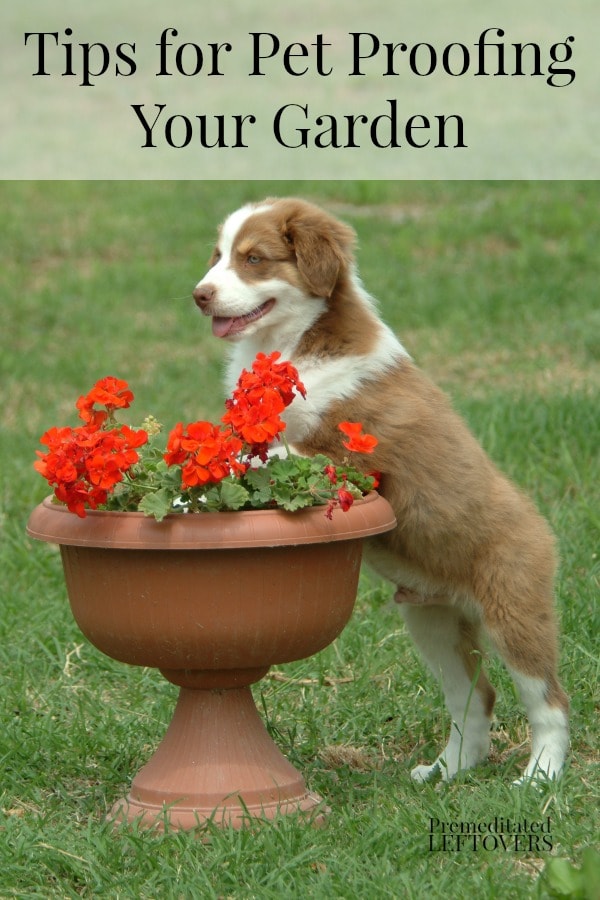It seems as though pets get just as excited about playing in the garden as we do! If you have pets who spend a great deal of time outdoors, you might want to consider their safety and comfort when it comes to planning your garden. With just a few considerations, you can make your garden a place that everyone can enjoy, even your four legged friends. Here is how to get started!
Tips for Pet Proofing Your Garden
1. Make your own plant foods and fertilizers.
You might be tempted to buy fertilizers and plant foods, but many come with a warning that they aren’t to be used around pets. If the products get on the pet’s paws, they can cause burns and irritation. If the pet licks the product off, it can result in poisoning. Instead, make your own natural alternatives. There are many items that come right from your kitchen that can be used instead. Feed plants with compost made from food scraps, egg shells, coffee grounds, and even citrus peels. You can also fertilize with DIY concoctions made from beer!
2. Try natural pest control.
You might be tempted to put out pest baits and poisons to keep pests at bay, but these products can poison your pet as well. Instead, try some natural solutions. Cayenne pepper can keep pests away, as can hair clippings added to your mulch. Marigolds can keep rabbits from entering your garden, while a simple netting can keep birds from nibbling. If you want to make your own pest spray, there are many recipes online that use essential oils, dish soaps, and other safe ingredients.
3. Keep water covered.
You don’t want any freestanding water to be left out for pets to sip on. Mosquitoes tend to lay eggs in freestanding water, which can lead to health issues if your dog drinks it. Freestanding water will also attract mosquitoes by the droves which can result in bites. Ponds and water features are fun, just keep a netting over them or keep them covered entirely so pets can’t drink from them.
4. Keep fencing and plant markers in good shape.
Don’t allow fencing to have splintered wood, nails, wiring, or other hazards. Keep all fencing in good repair. This way if your dog or cat chooses to climb, or decides to run quickly by the fence, there won’t be a risk for injury.
You want to keep the same ideas in mind for your plant markers. Don’t use markers that are sharp or will cause a hazard to your pet if stepped on. You also don’t want anything that your pet will be tempted to play with and chew on.
5. Be mindful of your plant selections.
Not all bulbs and seedlings are safe for pets. You want to check with the ASPCA as they have a comprehensive list of plants that are toxic to dogs, cats, and even horses. Avoid plantings any of the items on the list if you have a pet that wanders the yard. A nibble or two could cause some serious health issues.
When planting your garden this season, keep these safety tips in mind. They are a great way to be sure your garden is not only enjoyable for you, but for your pet as well!
More Gardening Tips
Tips for Child Proofing Your Garden


Leave a Reply